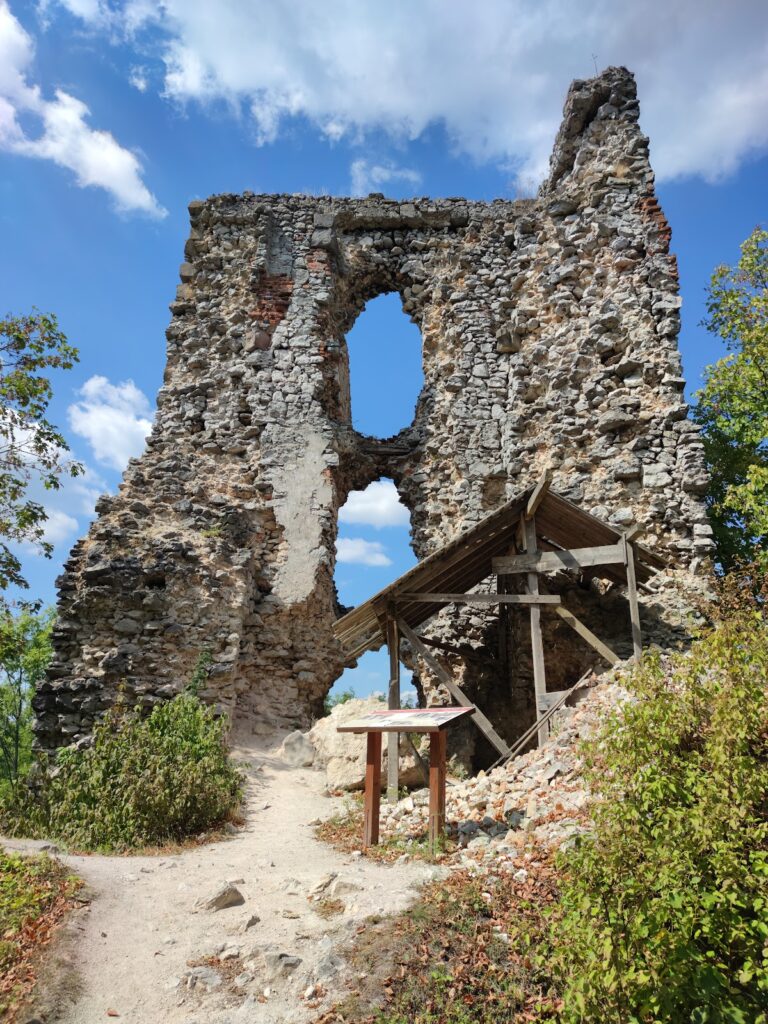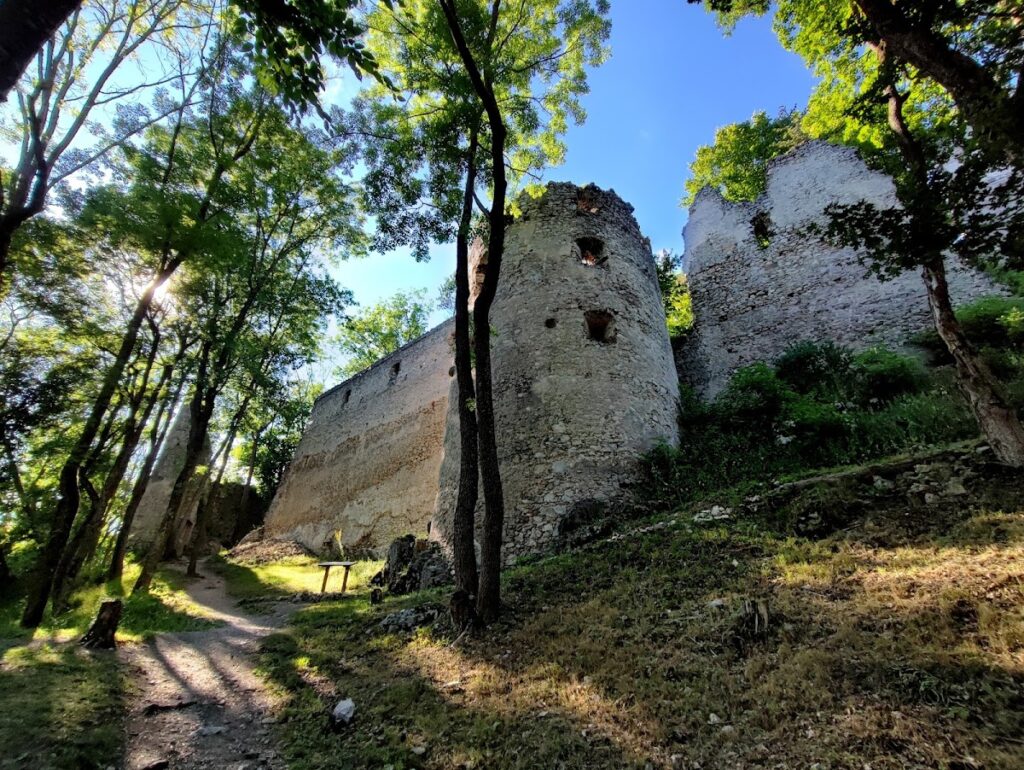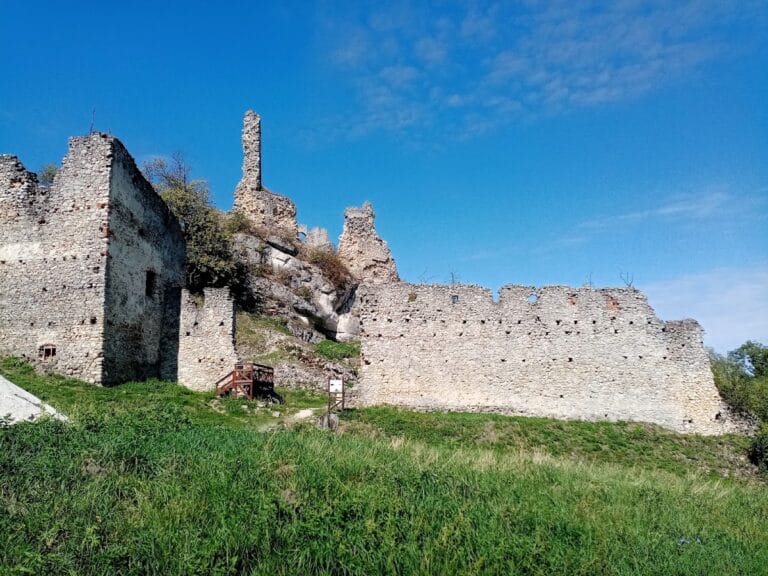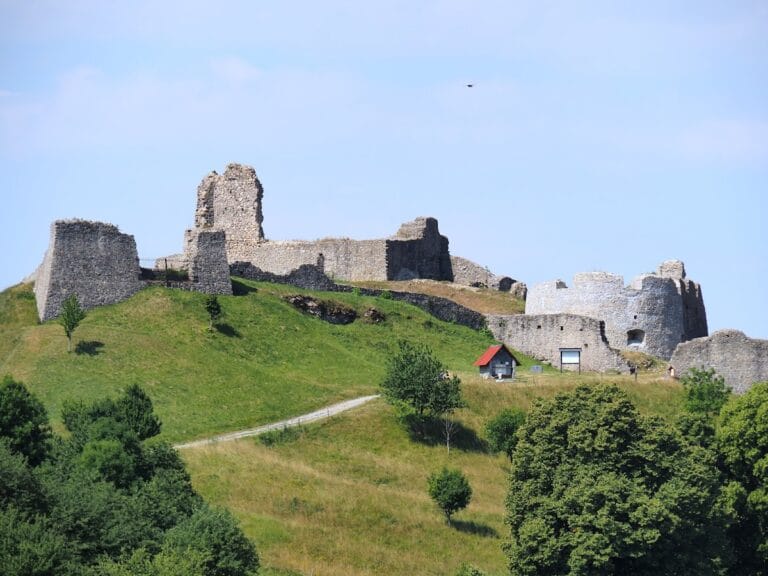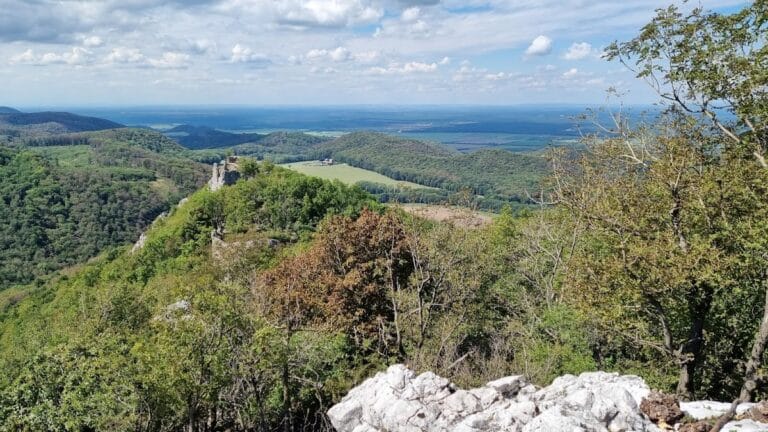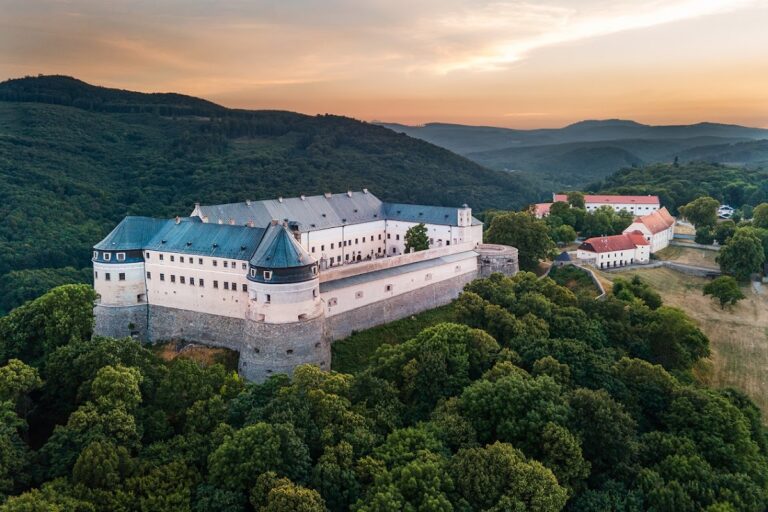Dobrá Voda Castle: A Medieval Fortress in Slovakia
Visitor Information
Google Rating: 4.8
Popularity: Low
Google Maps: View on Google Maps
Official Website: www.slovenskehrady.sk
Country: Slovakia
Civilization: Unclassified
Remains: Military
History
Dobrá Voda Castle is located in the municipality of Dobrá Voda in present-day Slovakia. It was originally constructed during the early 13th century by the medieval Kingdom of Hungary, building upon an even older fortification at the site. Its strategic position on a rocky hill provided control over a passage through the Malé Karpaty mountains.
The first recorded mention of the castle appears in documents from 1263, verifying its prominence by this time. Initially, Dobrá Voda was a royal property serving as a defensive outpost guarding the vital trade and military route known as the Czech Road. Throughout the late Middle Ages, the castle changed ownership several times. In the late 1300s, it came under the possession of Stibor of Stiboricz, a notable nobleman, and from 1436 it belonged to the Ország family, who maintained the castle’s role in regional defense.
During the 16th century, rising military threats, especially from the Ottoman Empire, prompted enhancements to Dobrá Voda’s fortifications. A foregate and bastions were added, extending the castle’s outer defenses. The path leading to the upper part of the fortress was carefully designed with winding, serpentine sections to slow and expose attackers. Over time, the castle passed through various hands, often by marriage or royal mortgage. By the late 1500s, it became the property of the Erdődy family, a powerful noble lineage that owned multiple estates in the region.
By the end of the 17th century, the Erdődy family shifted their residence to other properties, leading to Dobrá Voda’s abandonment. The castle then suffered damages during Rákóczi’s War of Independence, a conflict in the early 18th century aimed against Habsburg rule. While repairs were undertaken following the war, a lightning strike in 1762 caused a fire that destroyed much of the structure. Only a section that served as a noble prison remained usable for a time. From the 19th century onward, Dobrá Voda Castle fell into ruin and has remained in that state since.
Remains
Dobrá Voda Castle occupies an area of approximately 8,500 square meters on a hill rising 320 meters above sea level within the Slopy nature reserve of the Malé Karpaty mountains. The fortification is laid out with an upper and lower castle, surrounded by defensive walls designed to maximize protection of the site’s key buildings.
At the heart of the upper castle stood an elongated palace building, stretching between two rectangular towers with a prism-like shape at each narrow end. Today, only the northern wall of this palace survives. Near the eastern tower lies a small courtyard that holds a cistern, equipped with a well-preserved sink to collect and store water for the inhabitants. At the far end of this courtyard, a Gothic-style chapel or possibly a fortified palace wing is located, which appears to have served as a separate noble residence within the castle complex.
The upper castle was expanded westward with defensive additions, including a forecastle—a forward enclosure—and a cannon bastion, constructed to mount artillery for improved protection. The main entrance to this core area was guarded by a simple barbican, a fortified gateway designed to slow down and challenge approaching enemies.
To counter Ottoman advances, a lower castle was built featuring auxiliary buildings and several cannon bastions adapted for firepower defense. The approach to the upper castle from the lower sections was carefully planned, routed through four gates connected by a mix of winding and straight paths. This design enabled defenders to monitor and control visitors from elevated positions effectively.
Currently, the remains of Dobrá Voda Castle include fragments of its defensive walls and the partial ruins of its palace and chapel structures. Over time, natural vegetation has overgrown much of the site, contributing to its gradual decay while also preserving its outline within the landscape.

